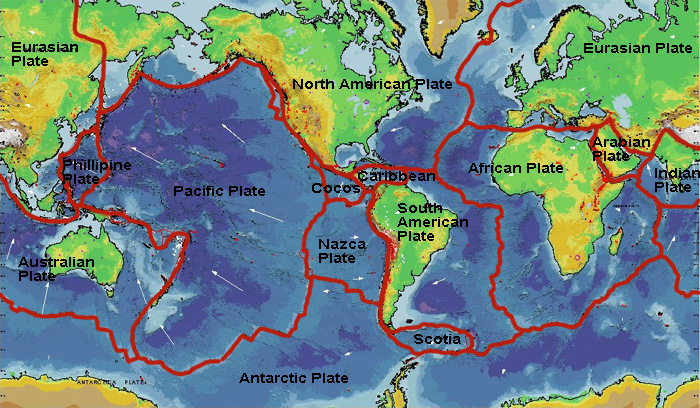
Plate tectonics is the movement of enormous sections of Earth’s crust—the plates. New crust forms where plates separate on the seafloor, and existing crust sinks into the mantle when a neighboring plate overrides it at what’s called a subduction zone.
The theory of plate tectonics has done for geology what Charles Darwin's theory of evolution did for biology. It provides geology with a comprehensive theory that explains "how the Earth works." The theory was formulated in the 1960s and 1970s as new information was obtained about the nature of the ocean floor, Earth's ancient magnetism, the distribution of volcanoes and earthquakes, the flow of heat from Earth's interior, and the worldwide distribution of plant and animal fossils.
The main features of plate tectonics are:
• The Earth's surface is covered by a series of crustal plates (the African, North American, South American, Eurasian, Australian, Antarctic, and Pacific plates. Several minor plates also exist, including the Arabian, Nazca, and Philippines plates).
• The ocean floors are continually moving (from 2 cm to 10 cm per year), spreading from the center, sinking at the edges, and being regenerated. The place where the two plates meet is called a plate boundary. Boundaries have different names depending on how the two plates are moving in relationship to each other: crashing (Convergent Boundaries), pulling apart (Divergent Boundaries), or sideswiping (Transform Boundaries).
• Convection currents beneath the plates move the crustal plates in different directions.
• The source of heat driving the convection currents is radioactivity deep in the Earths mantle.
There are a number of excellent sites dealing with the modern theory of plate tectonics. Here is a modest sample:

